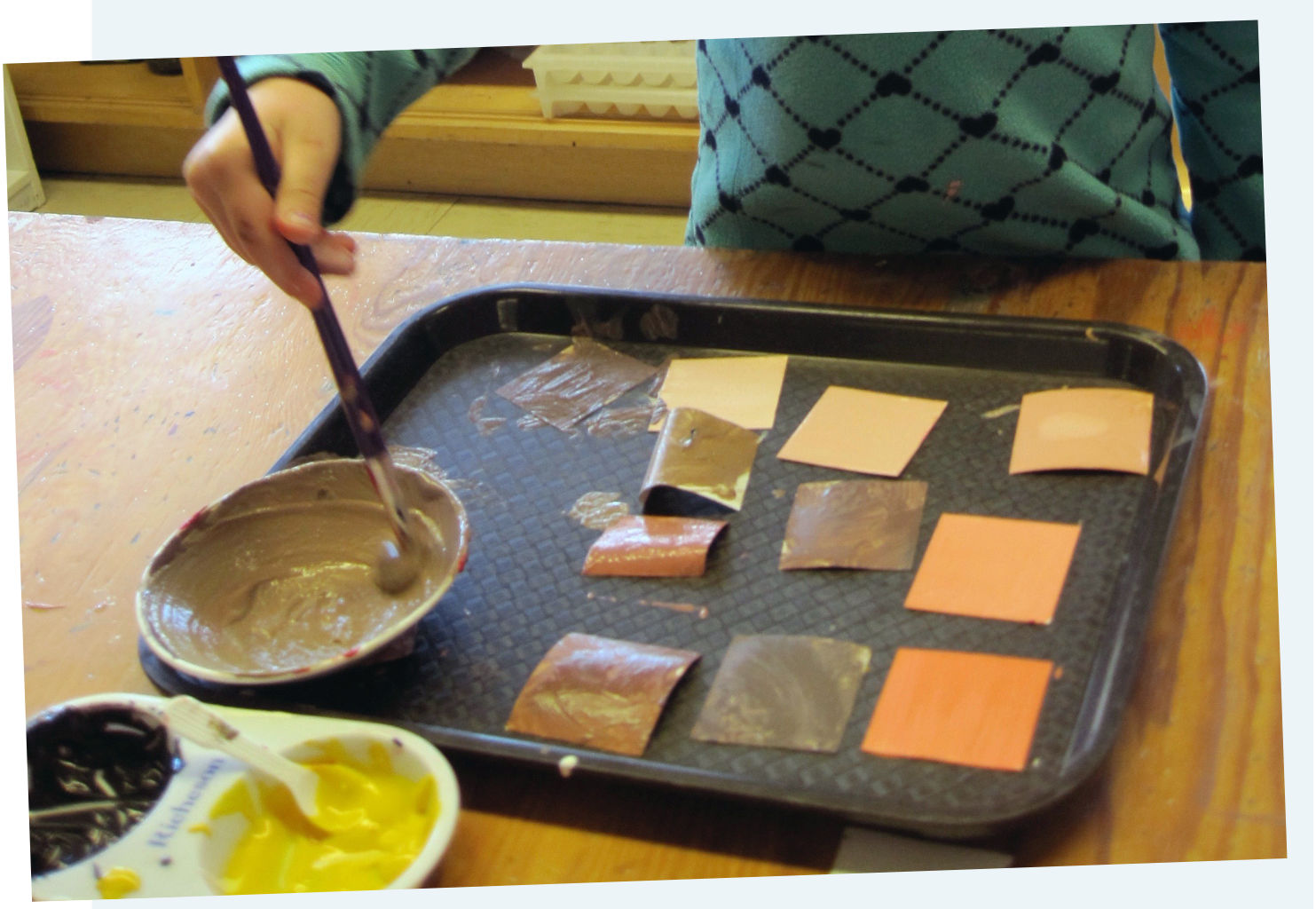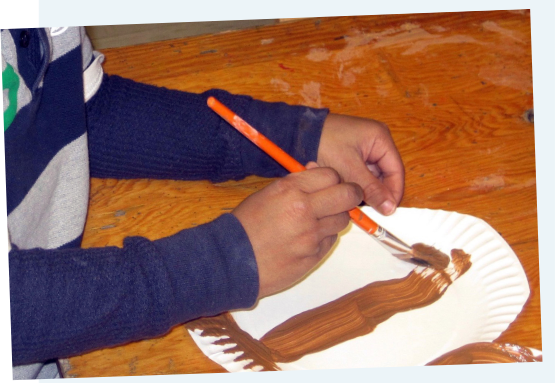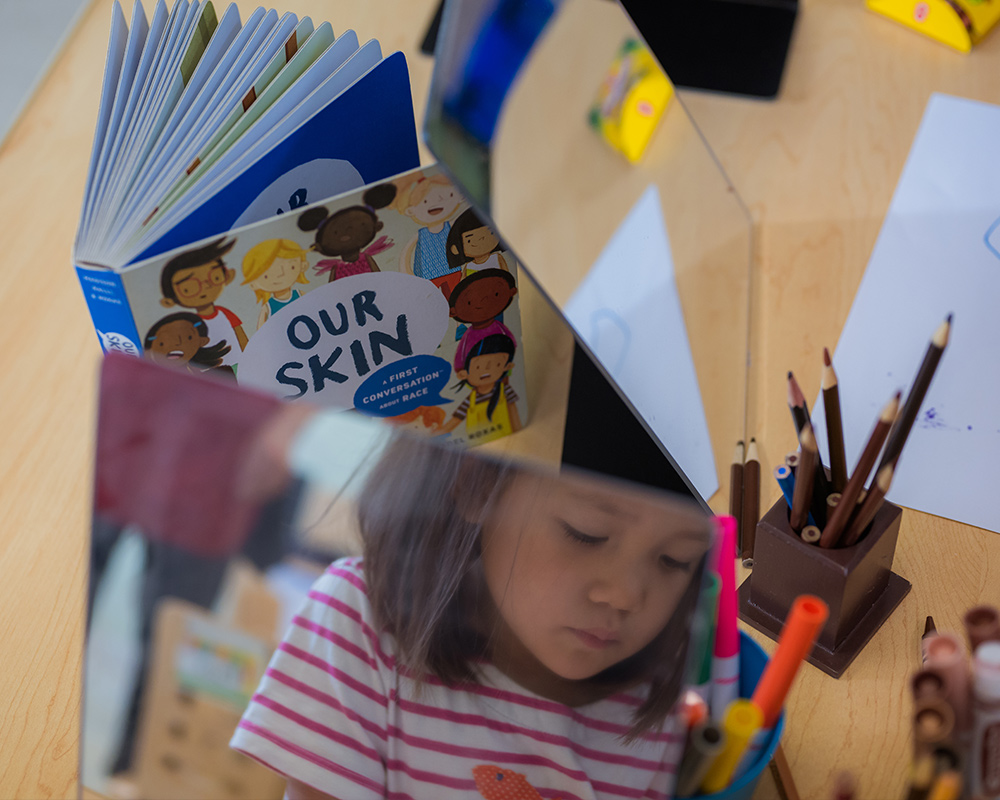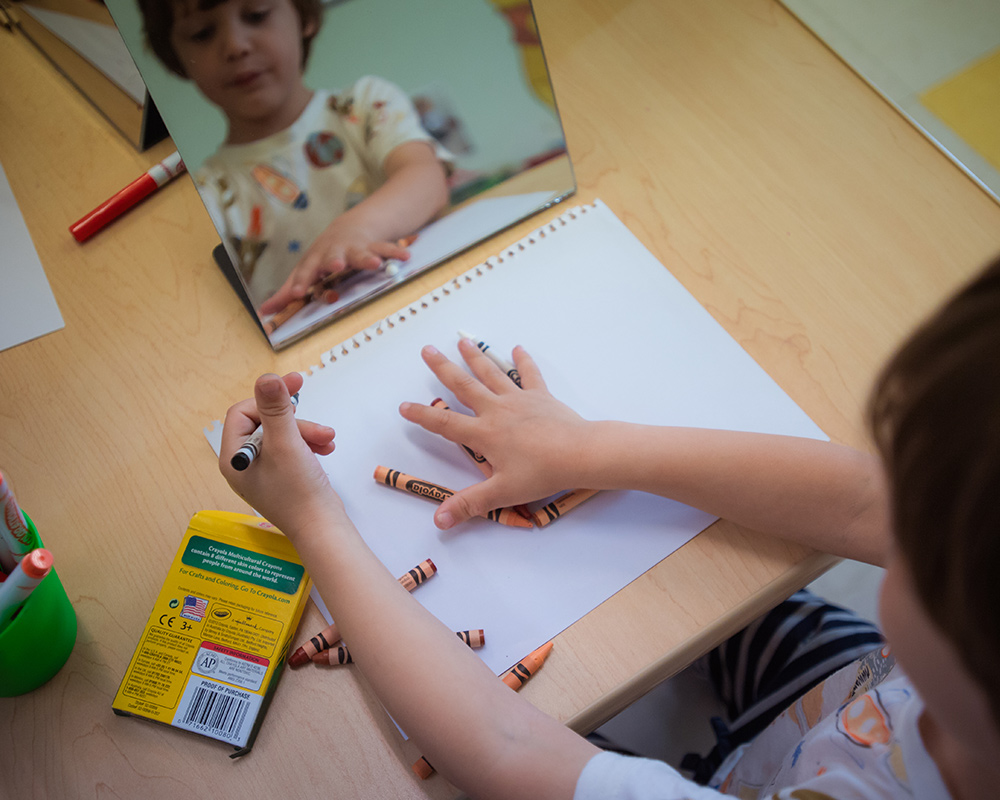
Anti-bias/Anti-racist Education
Overview
Somerville Early Education and the SEE Every Child Curriculum embrace Anti-bias Education (Derman-Sparks, Edwards, and Goins, 2020) as a framework and lens through which all work is planned and implemented. We integrate an Anti-racist approach, knowing that by centering race we acknowledge the impact of systemic racism on all children and families, their intersectional identities, and other -isms that impact whole and healthy development.
These pages are designed to be a resource for early childhood educators to grow their practice as anti-bias/anti-racist educators. It has been created by compiling the work and resources of many educators throughout Somerville and the world.
What Is Anti-bias/Anti-racist Education
Anti-bias/Anti-racist education is an integrated stance through which educators evaluate, alter, and design all aspects of their classroom environment, their routines and management, and their curriculum to create more and more equitable and inclusive experiences for students.
It is a part of everything we do
How we set up the classroom and the materials we use
It is fully integrated into the daily life of our classrooms and our social curriculum
Building community
Being with one others
Developing equitable systems
Why do we implement an Anti-bias Education approach?
Because bias, privilege, and power are built into our society and systems; and impact all children’s development and lives.
Because all children have a right to:
- become their fullest selves
- become culturally-aware people
- develop a full sense of fairness and justice
- seek equity (active participation) for all.

Anti-Bias/Anti-Racist Education Classroom Goals
These early childhood goals and learning outcomes are divided into four domains—Identity, Diversity, Justice and Action. Educators can use these standards to guide decision making, curriculum development, and daily choices to make learning environments more just, equitable and safe.
Adult Development Goals
Growing as an anti-bias/anti-racist educator includes introspection, self-reflection and a commitment to ongoing learning. Working with the following adult development goals will serve to deepen our relationships, collaborations, cultural relevance, critical pedagogy, and activism.
Educator/Adult Resources
These resources provide opportunities to expand your own learning and growth as an anti-bias/anti-racist educator. There are tools to assess, reflect upon, and enhance your practice, your classroom environment, and your understanding of the children and families you serve.
Resources for Talking About Race
Targeted Big Idea Guides
Anti-bias education is integrated into each Big Idea Guide. Sometimes this integration is seen as a perspective within a broader study, such as understanding the importance of accessibility within transportation. Other times the anti-bias goals are foundational to an entire project thread, such as a study on forms of protest when exploring the Big Idea “Civil Rights: Then and Now.” Regardless of topic, children are exposed to different perspectives, identities, and ways of life as they have meaningful discussions about differing perspectives, develop their ability to identify injustices and use their voice to work towards fairness for themselves and others. Four Selected Big Idea Guides have been developed to deepen children’s learning of the early childhood anti-bias goals and learning outcomes.
Lessons and Teaching Guides


